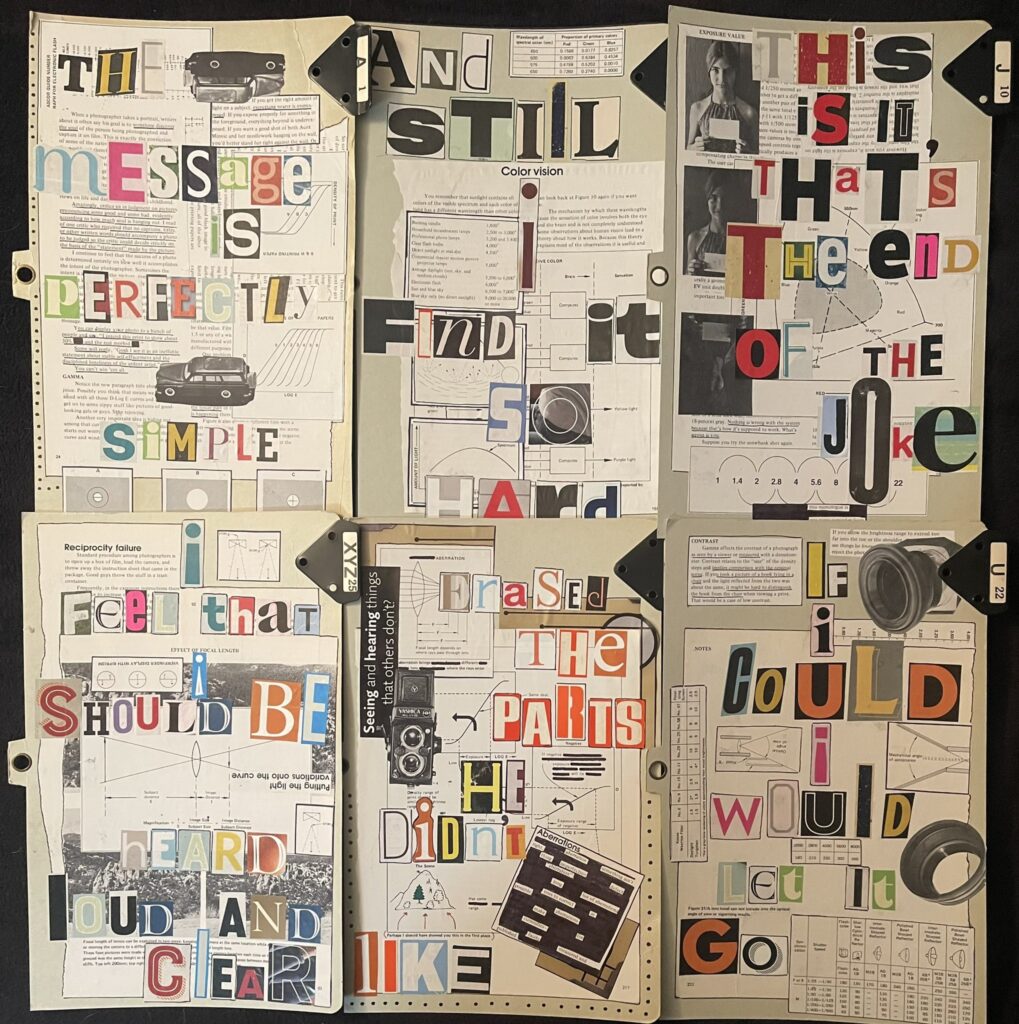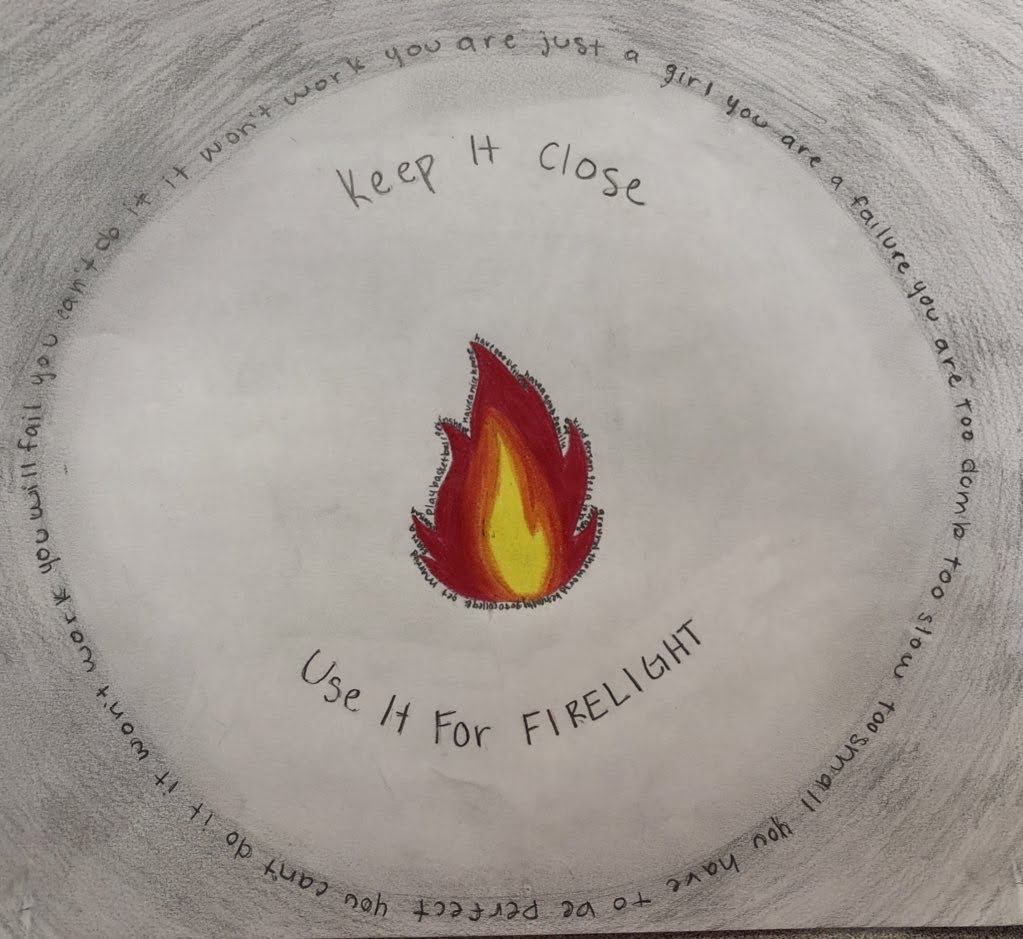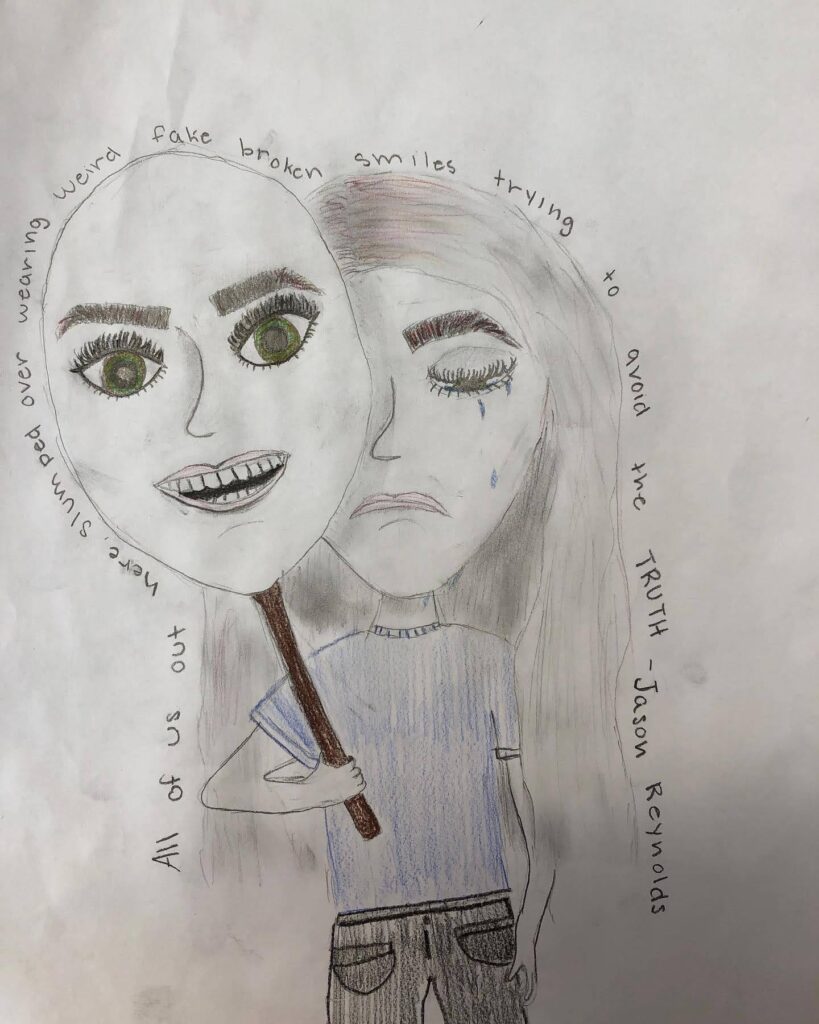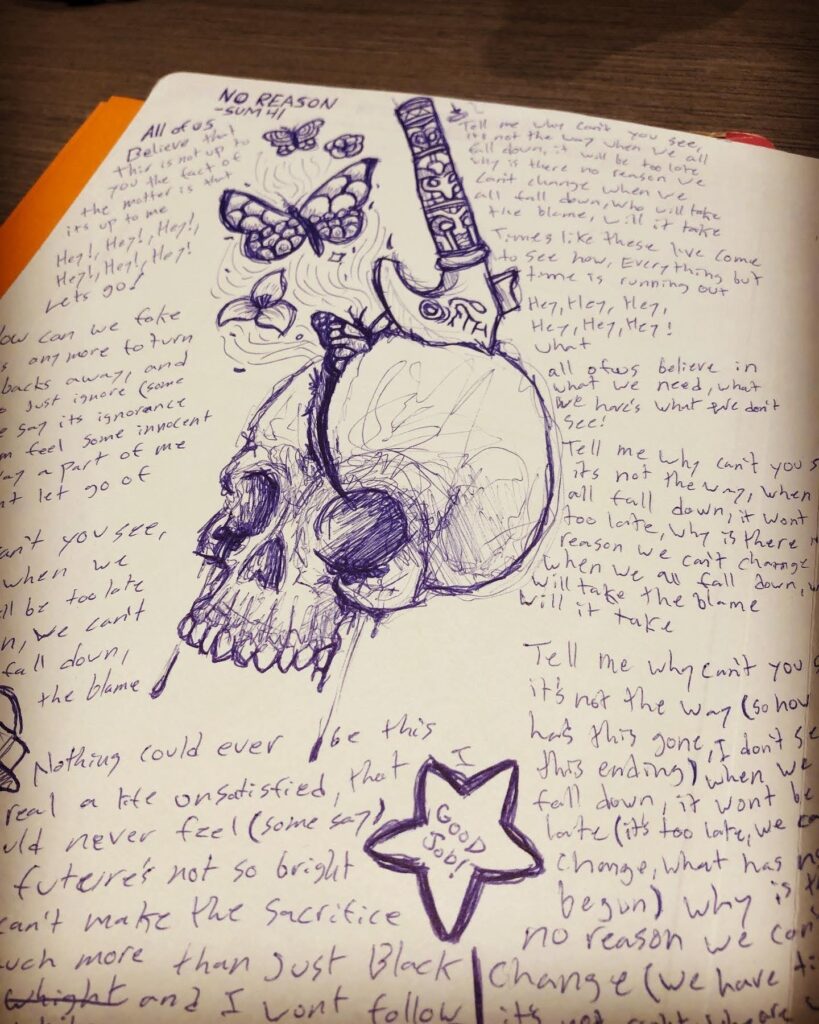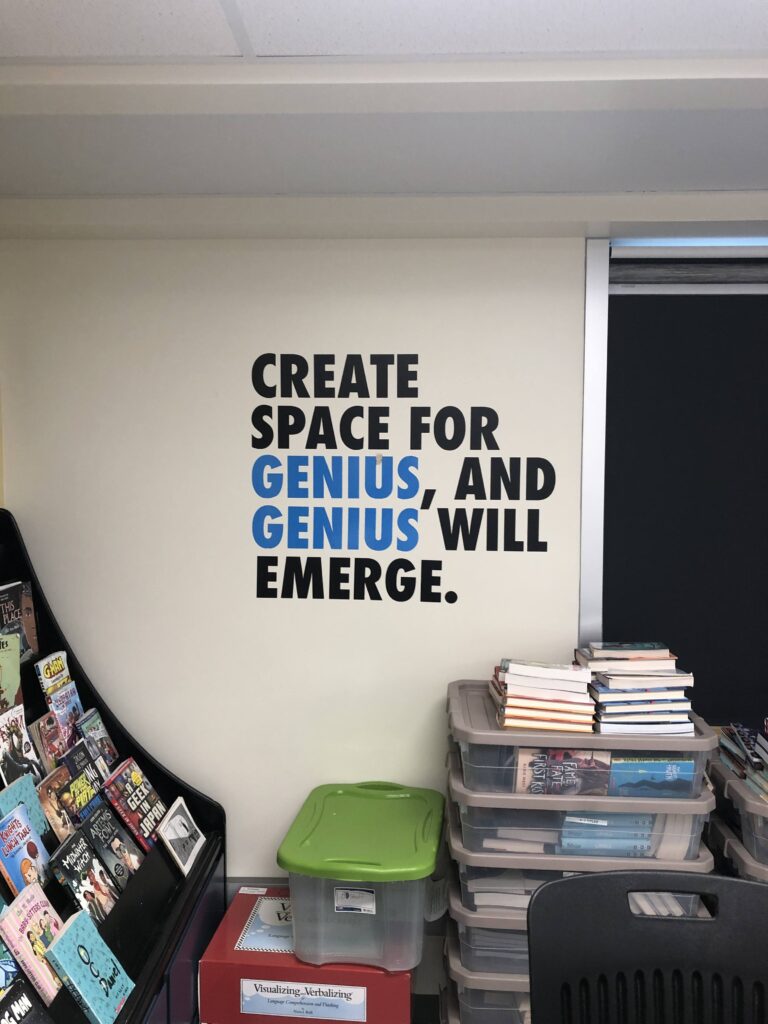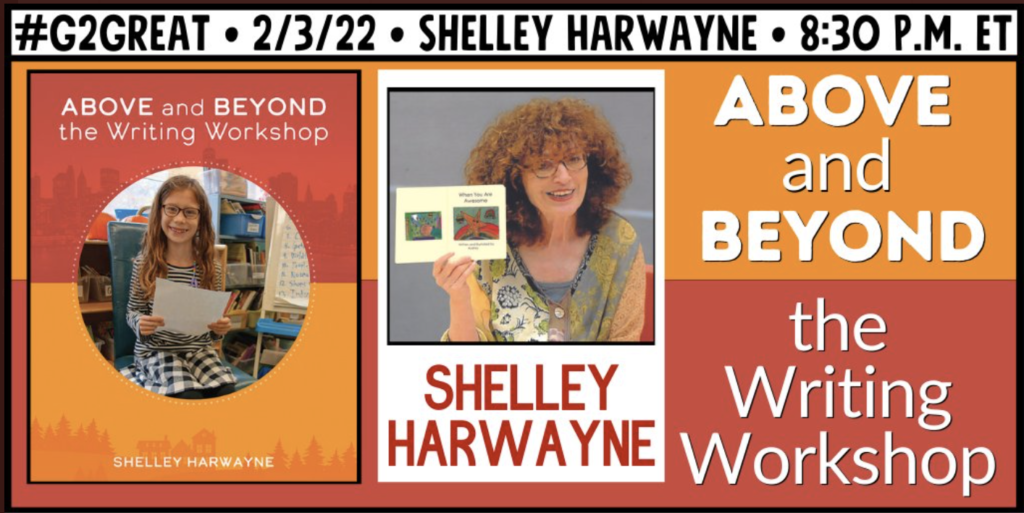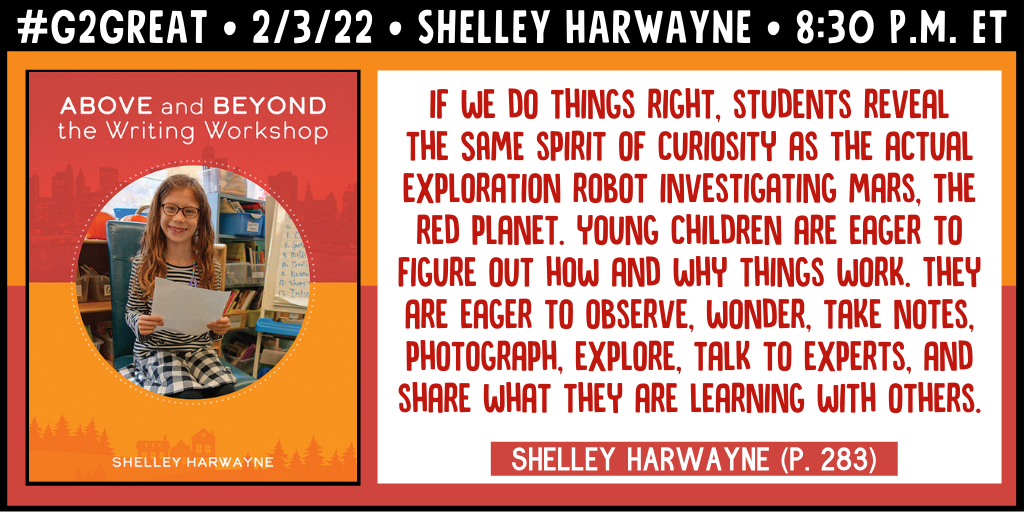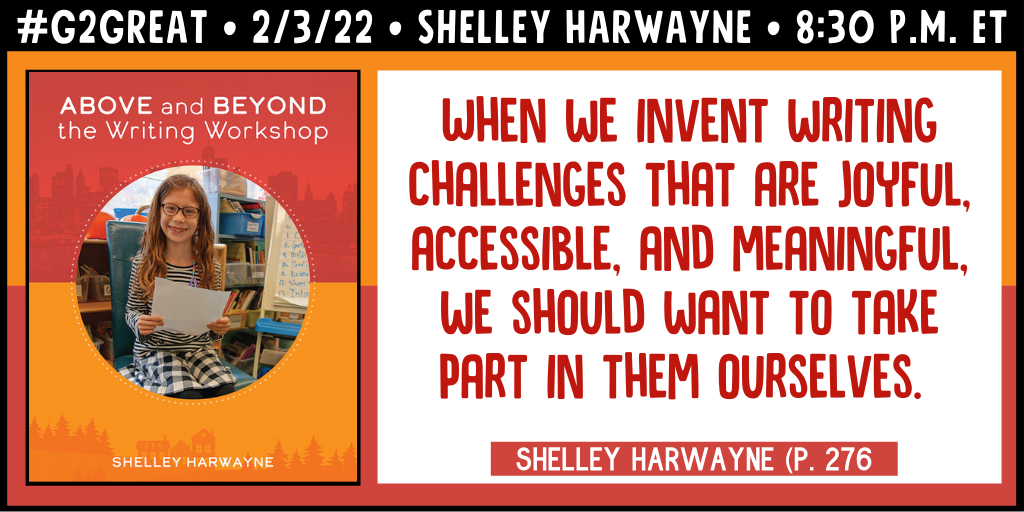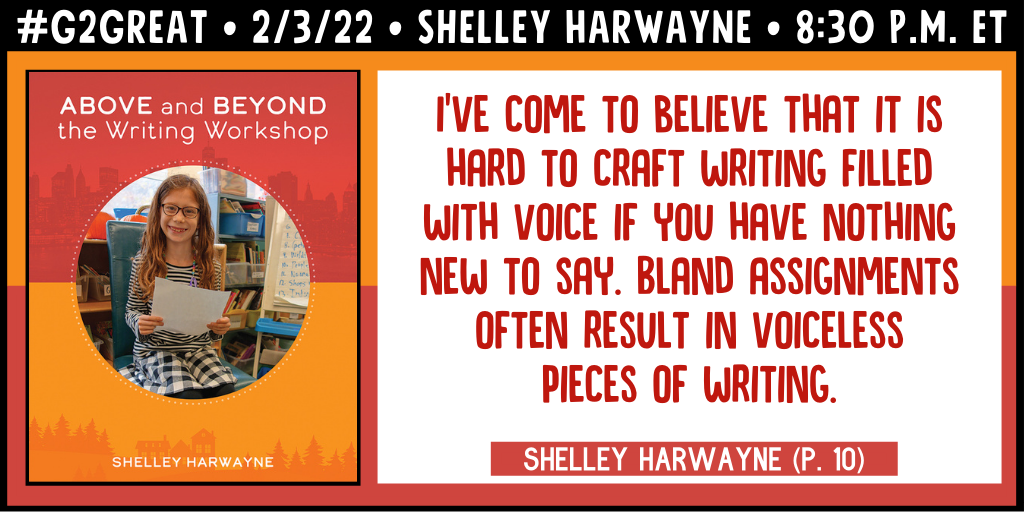
You can revisit our #G2Great chat Wakelet artifact HERE
Guest Blogger Laura Robb
This week, your #G2Great co-moderators were grateful to take on a very important topic that should be a central component of our discussions around the intervention process in every school. Since our wonderful friend, Laura Robb suggested this topic but is also a long time expert on this discussion, we were delighted that she agreed to write the post that follows. When Laura sent me the final draft, I got chills that stayed with me throughout the day. That is the sign of a brilliant piece indeed. We are honored to spotlight Laura Robb’s powerful voice starting with this wonderful quote below.
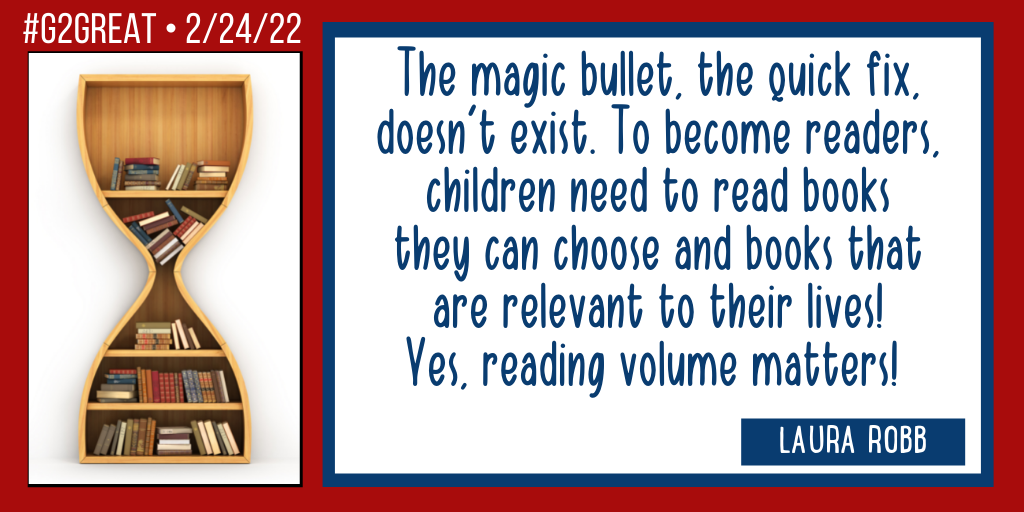
Volume in Reading: The Core Intervention for Developing Readers
To become readers children need to read books at school and teachers need to read aloud to their students every time class meets. These words might sound like obvious common sense to educators since we are a storying people, and we think in terms of stories, share our thoughts through stories, and stories enable us to learn and remember information, concepts, and ideas (Newkirk, 2014, Wells, 1986). A sad truth is that many developing readers—students reading two or more years below grade level—rarely hear stories read aloud or read books they choose. Reading books and listening to read alouds are usually not the core intervention for moving developing readers forward and improving their reading skill and identities.
Instead, interventions for many developing readers consist of skills such as phonics practice, developing and improving phonemic awareness, pseudo or nonsense word reading, fluency practice using repeated readings of short passages, etc. Such interventions are easily measureable and become the data by which many intervention programs measure success. Though children in these programs can show progress with individual skills, they frequently continue to struggle with reading, recall, and comprehension. In addition to skill practice and a steady diet of decodable texts, offering developing readers outstanding books that are relevant to their lives can change the landscape of intervention. Moreover, when these students increase their reading volume and listen to daily teacher read alouds, they can understand how:
- skills fit into the reading of meaningful books;
- a knowledge of word families supports decoding using analogous thinking;
- phonemic awareness supports decoding;
- hearing fluent, expressive reading during teacher read alouds can improve their fluent reading and why;
- practicing fluent, expressive reading with self-selected books can increase their recall and comprehension.
When Data Collection Is King
An intervention program exclusively focused on the data collection of measureable skills not only excludes volume in reading of books, but also often fails to consider the whole child—the person behind the numbers. Numbers can be deceptive and can advance the illusion that children are improving because skill assessments show progress. However, there’s a disconnect that often occurs and raises this question: If children’s skills are solid and show progress, why can’t they read and comprehend texts at their independent or instructional reading level? The answer is that practicing skills in isolation without students experiencing how these skills link to reading books can inhibit progress in reading with enjoyment and deep comprehension. The solution is simple: put volume in reading at the center of intervention plans and offer students opportunities to apply skills they’re practicing to outstanding books they select.
It doesn’t matter if your school has adopted a Response to Intervention (RTI) program or if you intervene using the original intent of RTI: that teachers use information they collect through observations and one-to-one interactions with students to tailor and target interventions to each student’s needs. What does matter is that the core intervention for students always is volume in reading and daily teacher read alouds.
Research Studies Support Volume in Reading
The research of Anderson, Wilson, and Fielding (1988) tells the story about volume in reading. Their study found a correlation between the time students devote to daily reading and their reading proficiency and comprehension of texts.
In sum, the principal conclusion of this study is that the amount of
time a child spends reading books is related to the child’s reading level in the fifth grade and growth in reading proficiency from second to fifth grade. The case can be made that reading books is a cause, not merely a reflection, of reading proficiency. (page 302)
However, The National Reading Panel rejected the findings of the 1988 study on the grounds that it did not meet their scientific research standards. The good news is that in 2004 Dr. S. Jay Samuels and Dr. Yi-chen Wu completed a scientific study in response to the National Reading Panel and concluded that the more time students read, the higher their achievement compared to a control group. Samuels’ and Wu ‘s scientific research corroborated the conclusions of Anderson, Wilson, and Fielding!
Nancie Atwell also links daily reading to developing proficiency in reading books every day (2010). Volume in reading is an effective intervention for developing readers (Allington 1977, 2012; Allington & Gabriel, 2012; Allington and McGill-Franzen, 2021) and a predictor of learning success because students who read, read, read develop a strong personal reading life as well as meet words in different contexts and enlarge their vocabulary, meet and understand diverse literary genres, discuss books with peers, develop positive reading identities, and find pleasure in reading and learning.
Even though the research on volume in reading is compelling, a survey done by Scholastic in 2017 and based on nearly 3,700 PreK-12 principals and teachers show that 94% of principals and teachers agree or strongly agree that students should choose books at school and read independently every day. Here’s the big disconnect: only 36% made time for daily independent reading. A startling statistic that most likely affects developing readers participating in RTI. In addition to more time for students to read at school, it’s would be helpful to study how schools schedule intervention support for elementary and middle school students.
Scheduling RTI Matters
When my granddaughter was in the fifth grade, she complained many times to me about being pulled out of her core reading class to receive support services. Here’s a summary of her complaints: Everyone thinks I’m dumb. They all stare at me when I have to leave class. I always get pulled out when we have independent reading or work with a partner on a project. I hate getting pulled out. I never get to do the fun stuff. Sometimes, we’re so intent on the interventions that we don’t take the time to evaluate students’ feelings as well as look for alternate ways of scheduling extra help. When principles, other school leaders, and teachers collaborate to find alternatives to pulling students out of a core class, they can find the solutions that meet the needs of all students.
My son, Evan Robb, principal of a Johnson Williams Middle School in Berryville, VA created an extra 25-minute class for intervention and independent reading of self-selected books. Students who required extra support received it during that time but also read books they chose; other students read self-selected books during that time and increased their volume in reading.
Robb discussed the need with faculty who agreed to give 5-minutes of their classes toward creating a separate class. By pooling ideas and thinking out of the box, it’s possible for teachers and administrators to find creative solutions that allow children receiving extra services remain in their core class for independent and instructional reading. Moreover, research clearly shows that a skilled, core ELA teachers can meet the needs of most of their students.
The Core ELA Curriculum Supports Developing Readers
Responsive, skilled teachers adjust their core ELA curriculum so that it’s accessible to every student in their classrooms. Instruction includes whole-class and small-group lessons that meet the diversity of reading and writing levels among students. Instead of practicing isolated skills, all students, including developing readers, practice skills in the context of motivating, culturally relevant instructional reading texts and then have opportunities to apply what they’ve learned to independent reading of self-selected books. These teachers recognize that volume in reading matters for all learners!
Researchers and educators agree that high-quality, responsive teaching in core ELA classes can support about 80 percent of the student population, enabling them to show solid growth during the year (Howard, 2009; Owocki, 2010). Teachers can meet this high level of progress because they try to identify students’ strengths and needs early in the school year and assess students’ progress through kid watching, conferring, and frequent informal conversations (Owocki & Goodman, 2002). They also monitor students’ progress in fluency, recall of details, comprehension, making inferences, writing about reading, etc. in order to evaluate present interventions and adjust their plans so students continually improve. Responsive teachers’ intervention plans also include daily read alouds that introduce students to a variety of genres and develop a keen interest in stories.
Consider Reading Aloud an Intervention
As responsive teachers build trusting relations with their students and start to know their students as learners and human beings, they recognize that daily read alouds are also interventions. When students listen to read alouds, they develop their imagination while picturing settings, characters, and events. They meet and hear a wide range of literary genres and begin to understand how each one works; they develop literary tastes and discover authors to explore; they tune their ears to literary language and words used in different contexts; they develop their listening capacity and experience pleasure in hearing stories and learning information from past, present and future worlds. Read alouds form and enhance students’ literary foundation, developing students’ prior knowledge about how stories and informational books work—a prerequisite for intervening with volume in reading.
Ramp Up the Reading Volume for Developing Readers
When volume in reading is the core intervention for developing readers, they can experience the value and joy of reading, the excitement of learning new information and meeting new people, laughing, enjoying conversations about books with peers, as well as understand the connection between skill practice and reading wonderful books. As you read the list of “15 Benefits of Independent Reading,” reflect on the power of volume in reading as the core intervention for developing readers.
15 Benefits of Independent Reading
- Refines students’ understanding of applying strategies, for during independent reading, students have multiple opportunities to practice what they learn during instructional reading.
- Develops an understanding of how diverse genres work as readers figure out the likenesses and differences among realistic, historical, and science fiction, fantasy, mystery, thrillers, biography, memoir, informational texts, etc.
- Enlarges background knowledge and deepens readers’ understanding of people as they get to know different characters.
- Builds vocabulary as students meet and understand words in diverse contexts. Independent reading, not vocabulary workbooks, is the best way to enlarge vocabulary because students meet words in the context of their reading.
- Teaches students how to self-select “good fit” books they can and want to read.
- Develops students’ agency and literary tastes. Choice builds agency and as students choose and dip into diverse genres and topics, they discover the types of books they enjoy.
- Strengthens reading stamina, their ability to focus on reading for 20-minutes to one hour.
- Improves silent reading. Through daily practice students develop their in-the-head reading voice and learn to read in meaningful phrases.
- Develops reading fluency because of the practice that voluminous reading offers.
- Supports recall of information learners need as they read long texts that ask them to hold details presented in early chapters in their memory so they can access these later in the book.
- Improves reading rate through the practice that volume provides.
- Develops students’ imagination as they visualize settings, what characters and people look like, conflicts, decisions, problems, interactions, etc.
- Fosters the enjoyment of visual literacy when students read picture books and graphic texts.
- Creates empathy for others as students learn to step into the skin of characters and experience their lives.
- Transfers a passion for reading to students’ outside-of-school lives and develops the volume in reading students need to become proficient and advanced readers.
By increasing developing readers volume in reading, and that includes daily teacher read alouds, you can impact their desire to read which in turn improves their reading skill, offers them a wider range of book choices, and cultivates their reading identity. As you amplify the message that volume in reading matters by making time for students to read books every day, you telegraph to developing readers that you value choice, volume in reading, and will provide support and encouragement as they embark on a journey of becoming joyful, lifelong readers.
References
Allington, Richard, L. (1977). “If They Don’t Read Much, Hope For Struggling Readers,” Voices from the Middle, 14(4): 7-14.
Allington, Richard L. (2012). What Really Matters for Struggling Readers: Designing Research-based Programs. Boston, MA: Pearson.
Allington, Richard L. & Rachael E. Gabriel (2012. “Every Child, Every Day” Educational Leadership 69(6), 10-15.
Allington, R.L. and McGill-Frazen, A. M. (2021). Reading volume and reading achievement: A review of recent research. Reading Research Quarterly. Newark, DE: ILA.e
Anderson, Richard C., Wilson, Paul T., and Linda G. Fielding. (1988). “Growth in Reading and How Children Spend Their Time Outside of School.” Reading Research Quarterly, 3(23), 2d85-303, Newark, DE: The International Reading Association.
Newkirk, T. (2014). Minds Made for Stories: How We Really Read and Writ Informational and Persuasive Texts, Portsmouth, NH: Heinemann.
Howard, Mary (2009). RTI From All Sides: What Every Teacher Needs to Know. Portsmouth, NH: Heinemann.
Owocki, Gretchen (2010). The RTI Daily Planning Book, K-6. Portsmouth, NH: Heinemann.
Owocki, Gretchen and Yetta Goodman (2002). Kidwatching: Documenting Children’s Literacy Development. Portsmouth, NH: Heinemann.
Samuels, S. Jay, and Wu, Yi-chen. (2004). How the amount of time spent on independent
reading affects reading achievement: A response to the National Reading Panel
Retrieved from http://citeseerx.ist.psu.edu/viewdoc/summary?doi=10.1.1.539.9906
Scholastic. (2017). Teacher & Principal School Report: Focus on Literacy.
Wells, Gordon (1986). The Meaning Makers: Children Learning Language and Using Language to Learn. Portsmouth, NH: Heinemann.
Additional References from Laura Robb
There’s an Elephant in Our Classroom by Laura Robb
Our #G2Great Blog post on Schools Full of Readers: Tools for Teachers, Coaches, and Leaders to Support Students by Laura Robb and Evan Robb.


